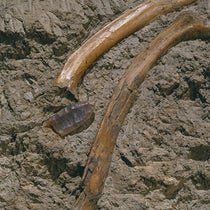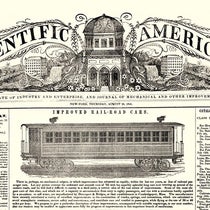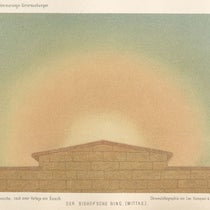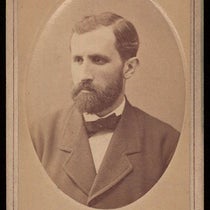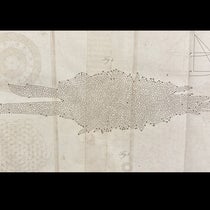Scientist of the Day - William de Wiveleslie Abney
William de Wiveleslie Abney, a British photographer, chemist, and inventor, was born in Derby on July 24, 1843. His middle name is very distinctive; I have no idea where it came from, as all Google searches lead to Abney and only Abney. His parents were well-off and owned an estate in Derby. Abney spent some time in India with the Royal Engineers, and taught at the Chatham School of Military Engineering. Once he got interested in photography, and especially in photographic chemistry, he seems to have worked independently, living on family money.
Abbey made quite a few contributions to the science of photography, inventing, for example, a dry emulsion about the same time as George Eastman in the U.S., and he developed new methods and equipment for pursuing infrared photography. He wrote several textbooks, which were apparently quite popular, as they went through many editions (we have the 10th edition, 1901, of his Treatise on Photography, as well as some lectures on color vision, and one other book, in our collections).
But Abney was also a photographer, and since we don't have many books by Abney, I thought I would discuss the most interesting Abney book we lack, his Thebes and its Five Greater Temples, published in 1876. Abney went, or was sent, to Egypt in 1875 to photograph the transit of Venus across the Sun. That task completed, he stayed on to photograph the ruins around Thebes, halfway up the Nile, and he published a selection of 40 of his favorite images in 1876.
We are quite partial to images of Egyptian ruins at our Library, for we have a set of the Description de l’Egypte (1809-28), with its 837 engravings of drawings made by the scientific corps that Napoleon took to Egypt in 1798, and we even organized an exhibition of many of the volumes in 2006 to inaugurate our new exhibition space. You may see a photograph of our set at our post on Edme Jomard.
Since we do not have Abney's Thebes, I show you images from a copy made available online by the University of Heidelberg. There is also a set of prints at the Metropolitan Museum of Art, but their idea of "make available" is to show you the images but prevent you from saving or downloading them, so I did not use any of the Met images here.
According to the Met description, Abney's photographs were reproduced as Woodburytypes, an elaborate and expensive method for printing photographs that was invented in the 1870s. We have a book in our collections, The Moon, by James Nasmyth, that used Woodburytypes to reproduce Nasmyth's photos of lunar models, and the images are exceptionally realistic. You may see several at our post on Nasmyth.
Here, we show you a few of my favorite prints from Abney's Thebes, as well as several details, since one of the admirable traits of a Woodburytype is that you can enlarge it indefinitely without encountering any half-tone grain.
The fallen colossus at the Memnonium on the plain of Thebes (sixth and seventh images) was supposedly the inspiration for Shelley's Ozymandias, although Abney doesn't mention that in his descriptive text. Perhaps he was not the poetic type.
And just to indicate how different photography is as a medium of record from an artist's pencil, I show you a detail of the engraving of the Colossi of Memnon in the Napoleonic Description (last image). You may take your choice, or you may appreciate the attractions and advantages of each.
William B. Ashworth, Jr., Consultant for the History of Science, Linda Hall Library and Associate Professor emeritus, Department of History, University of Missouri-Kansas City. Comments or corrections are welcome; please direct to ashworthw@umkc.edu.










